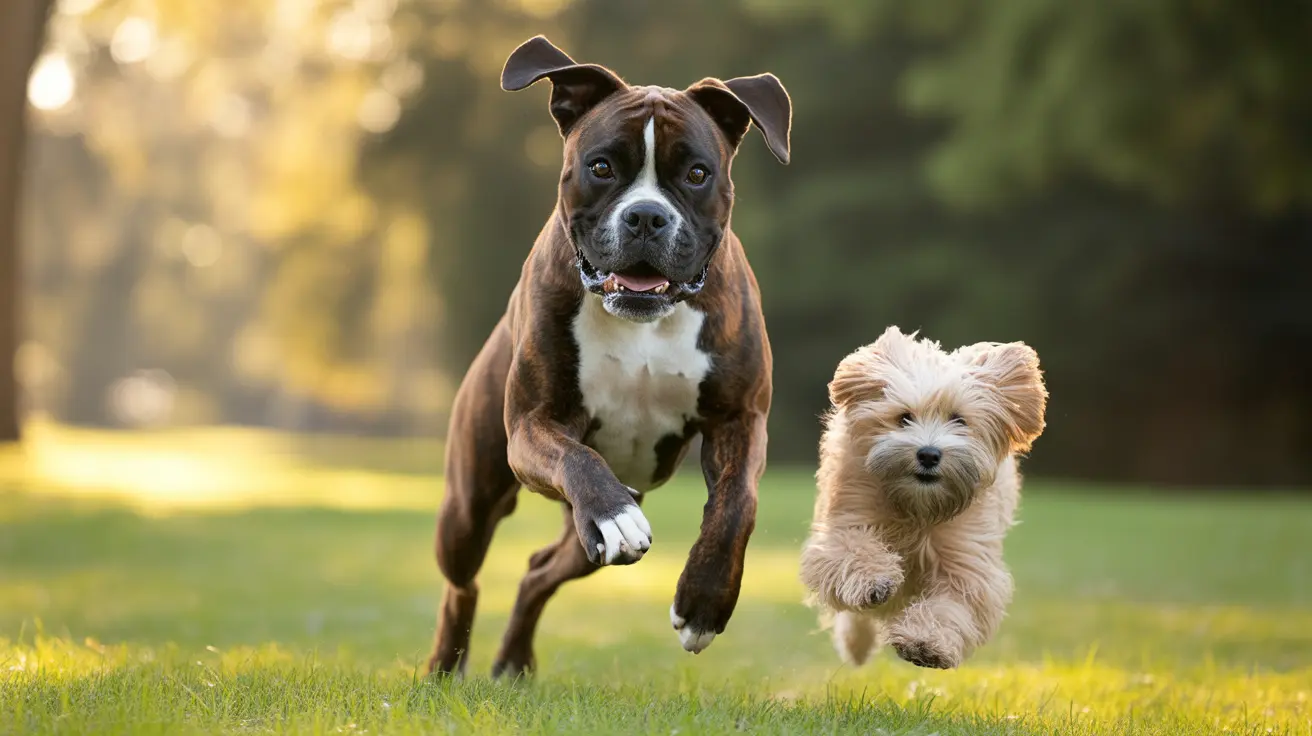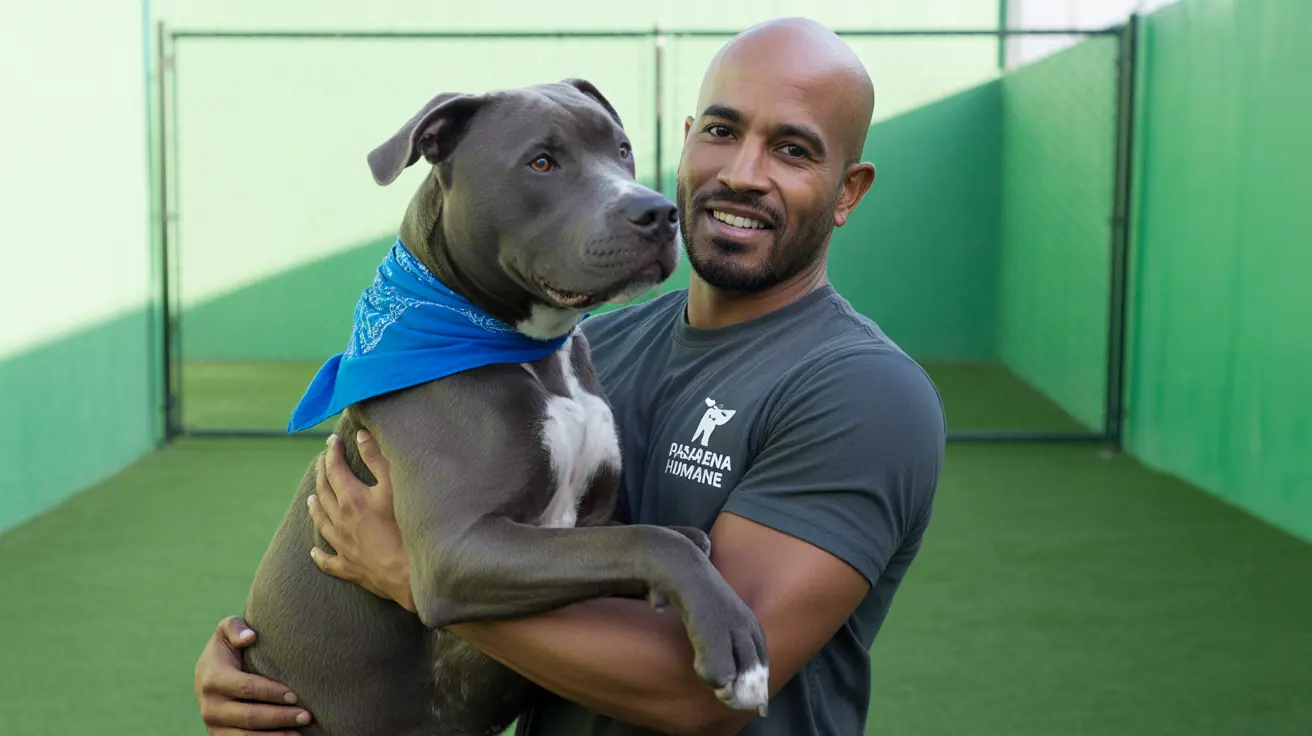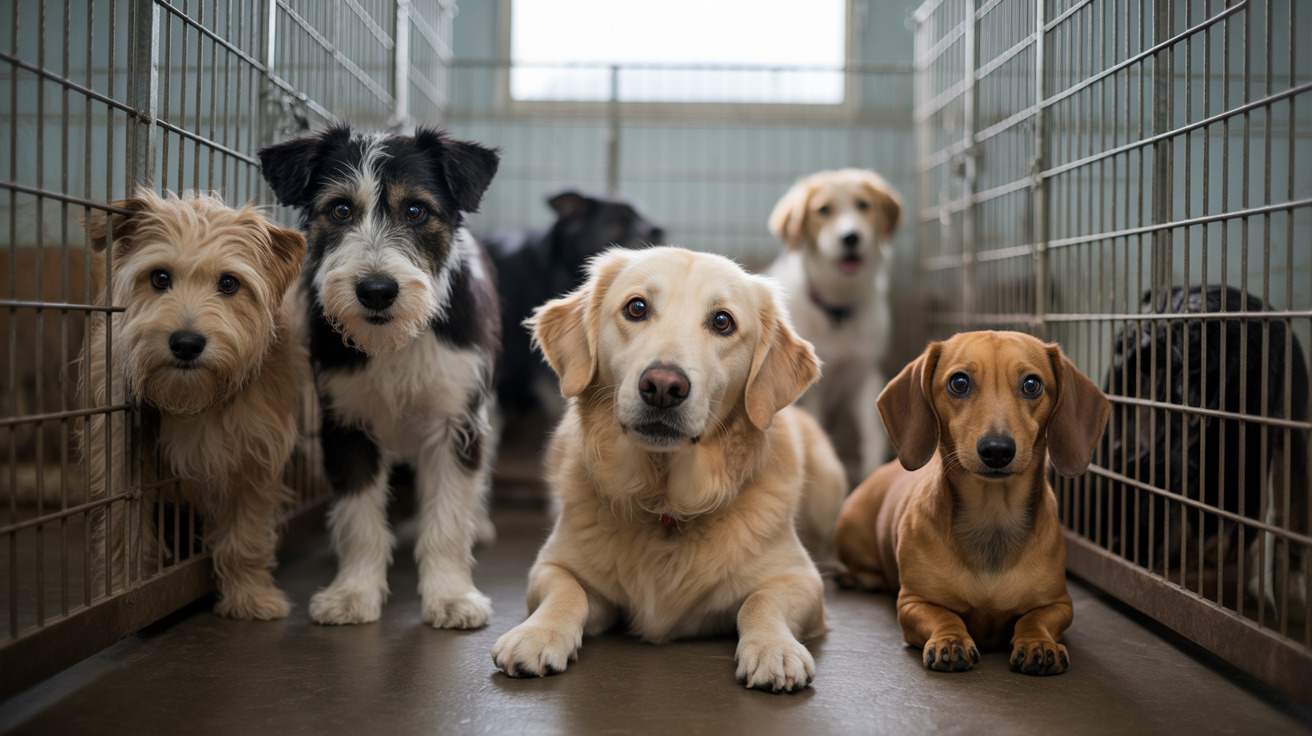Calm Dog Encounter Strategies: Expert Tips for Stress-Free Dog-to-Dog Greetings During Walks
Dog encounters during walks can be sources of joy or stress, depending on how they're managed. Whether you're walking a confident golden retriever or a nervous rescue dog, mastering calm dog encounter strategies is essential for creating positive experiences for both you and your canine companion. These encounters don't just happen randomly—they require thoughtful preparation, keen observation skills, and the ability to communicate effectively with both dogs and their owners.
Understanding how to navigate dog-to-dog interactions during walks goes beyond basic pet etiquette. It's about creating a foundation of trust, safety, and positive associations that will benefit your dog throughout their lifetime. When encounters are managed properly, they become opportunities for socialization, mental stimulation, and confidence building rather than sources of anxiety or conflict.
The Foundation: Why Your Calm Energy Matters Most
Your emotional state directly influences your dog's behavior during encounters with other dogs. Dogs are incredibly perceptive to their owner's energy and will often mirror your emotional state. When you remain calm and relaxed during dog encounters, you're essentially communicating to your dog that the situation is safe and under control.
This principle works because dogs look to their owners for leadership and guidance, especially in uncertain situations. If you're tense, worried, or anxious about an approaching dog, your own dog will pick up on these cues through your body language, the tension in the leash, and even your scent. Conversely, when you maintain a relaxed posture and steady breathing, you signal that there's no threat present.
To project calm energy effectively, focus on keeping your shoulders relaxed, maintaining steady breathing, and avoiding sudden movements. Your leash handling should be loose but controlled—tight leashes often communicate tension to dogs and can escalate situations unnecessarily.
Reading and Interpreting Dog Body Language
Successful dog encounters depend heavily on your ability to read both dogs' body language accurately. Understanding these subtle cues allows you to identify potential issues before they escalate and make informed decisions about whether to proceed with or avoid an interaction.
Signs of a Relaxed, Friendly Dog
A dog that's comfortable and open to interaction will display several positive body language signals. Look for a loose, wiggly body posture with natural movement. The tail should be in a neutral or slightly raised position with a loose wag—not stiff or high. The dog's ears should be in their natural position, not pinned back against their head or rigidly forward.
Relaxed dogs often approach with what's called a "play bow"—front end down, rear end up—or with a bouncy, indirect approach rather than a stiff, direct line. Their facial expression should appear soft, with their mouth possibly open in a relaxed pant.
Warning Signs to Watch For
Several body language signals indicate a dog may be uncomfortable, stressed, or potentially reactive. Pinned-back ears, a tucked tail, or raised hackles (the fur along the back and neck standing up) are clear indicators that a dog is not in the right state for a friendly encounter.
A stiff, rigid posture with direct, hard staring is another red flag. Dogs displaying these behaviors may be feeling threatened or defensive. Other concerning signs include excessive panting when it's not hot, drooling, or attempts to hide behind their owner.
If you observe any of these warning signs in either dog, it's best to create distance and avoid forcing an interaction.
Mastering Non-Verbal Communication with Other Dog Owners
Effective dog encounters often depend as much on human-to-human communication as dog-to-dog interaction. Coordinating with other dog owners through non-verbal cues helps prevent misunderstandings and ensures both parties are comfortable with the interaction.
Eye contact with the other owner, accompanied by a friendly nod or smile, can communicate your openness to an interaction. However, it's equally important to respect signals that indicate the other owner prefers to avoid contact. If they're actively steering their dog away, shortening their leash, or avoiding eye contact, these are clear indicators that they don't want their dog to interact.
Simple gestures like slowing your pace, moving to one side of the path, or creating more space communicate respect and awareness to other dog owners. These small actions often make the difference between a smooth, positive encounter and a stressful situation.
Strategic Approach Techniques for Stress-Free Encounters
The way you and your dog approach another dog and owner significantly impacts the outcome of the encounter. Direct, frontal approaches can be perceived as threatening or confrontational by dogs, even when no aggression is intended.
The Arc Approach Method
Instead of allowing your dog to make a direct beeline toward another dog, guide them in a slight arc or curved path. This approach gives both dogs time to assess each other without feeling cornered or threatened. The arc approach mimics natural dog greeting behaviors and reduces the likelihood of triggering defensive responses.
When using this technique, maintain a relaxed pace and keep your leash loose. Allow your dog to look at the other dog while walking the curved path, but discourage intense staring or pulling toward the other dog.
Sideways Passing Strategies
Sometimes the best encounter is a brief, sideways pass rather than a full greeting. This technique works particularly well for dogs who are still learning social skills or those who become overstimulated by direct interactions.
When passing sideways, maintain adequate distance between the dogs—typically 6 to 10 feet—and continue walking at a normal pace. This allows both dogs to acknowledge each other without the pressure of a formal greeting.
Preventing Leash Entanglement and Managing On-Leash Dynamics
Leash management is crucial for safe dog encounters. Tangled leashes not only create physical hazards but also increase stress levels for both dogs and owners. When leashes become entangled, dogs can feel trapped, leading to panic or defensive behaviors.
To prevent leash entanglement, keep your leash relatively short but not tight. This gives you better control while still allowing your dog some freedom of movement. If you're allowing dogs to greet, coordinate with the other owner to keep leashes from crossing or wrapping around legs.
If leashes do become tangled, both owners should move calmly and methodically to untangle them rather than pulling or jerking the leashes, which can escalate the situation.
When and How to Allow Off-Leash Interactions
Off-leash play should only occur under very specific circumstances and when certain conditions are met. Both dogs must be well-trained, calm, and responsive to their owners' commands. The environment should be secure and appropriate for off-leash activity.
Before allowing off-leash interaction, both dogs should demonstrate solid recall training. This means they reliably come when called, even when excited or distracted. Without this foundation, off-leash encounters can quickly become problematic if intervention is needed.
The decision to allow off-leash play should be mutual between both owners, and either party should feel comfortable ending the interaction at any time without explanation or justification.
Respecting Boundaries: When Dogs Don't Want to Interact
Not every dog wants to meet every other dog, and respecting these preferences is crucial for maintaining positive experiences. Some dogs are naturally more selective about their social interactions, while others may be recovering from negative experiences or dealing with health issues.
Signs that a dog doesn't want to interact include actively trying to move away, hiding behind their owner, or showing stress signals like excessive panting or drooling. When you observe these behaviors, the kindest thing to do is create space and allow the dog to feel safe.
Teaching your dog that they don't have to greet every dog they meet actually builds confidence and reduces anxiety over time. Dogs who know they have the option to avoid interactions they're not comfortable with tend to be more relaxed during walks.
Handling Encounters with Reactive or Aggressive Dogs
Unfortunately, not all dog encounters will involve friendly, well-socialized dogs. Knowing how to handle encounters with reactive or aggressive dogs safely protects both you and your dog from potential harm.
If you encounter a dog displaying aggressive body language—such as raised hackles, intense staring, or a stiff, forward-leaning posture—avoid direct eye contact and slowly create distance. Don't turn your back on an aggressive dog or run, as this can trigger a chase response.
For dogs that are loose and potentially aggressive, use the "Be a Tree" technique: stand still with your arms tucked in, hands folded, and look down. This non-threatening posture helps avoid triggering the dog's chase or attack instincts.
Environmental Factors That Support Calm Encounters
The environment where dog encounters take place significantly influences their success. Quiet, spacious areas with minimal distractions provide the best conditions for positive interactions.
Timing also matters. Early morning or late evening walks often involve fewer dogs and people, making encounters more manageable. Wide paths or open areas allow for proper spacing and escape routes if needed.
Weather conditions can affect dogs' moods and energy levels. Hot weather may make dogs more irritable, while cool, comfortable conditions often promote calmer behavior.
Training Techniques for Better Encounter Success
Improving your dog's recall and responsiveness significantly enhances the safety and success of dog encounters. Regular training sessions focusing on commands like "come," "stay," and "leave it" provide you with tools to manage encounters effectively.
Practice these commands in increasingly distracting environments, starting at home and gradually progressing to busier areas. Reward your dog consistently for responding to commands, especially when other dogs are present.
Desensitization training can help dogs with anxiety or reactivity issues become more comfortable with encounters over time. This involves gradually exposing your dog to other dogs at distances where they remain calm and rewarding positive behavior.
Post-Encounter Management and Positive Reinforcement
How you handle the moments immediately after a dog encounter significantly impacts your dog's future behavior and associations. Regardless of whether the encounter was positive, negative, or neutral, continuing your walk calmly helps your dog process the experience appropriately.
Avoid making a big fuss over your dog after encounters, as this can create either anxiety or overexcitement about future meetings. Instead, maintain normal energy and continue with your planned route.
If the encounter was positive, you can offer quiet praise and perhaps a small treat once you've moved away from the other dog. This helps reinforce the positive experience without overwhelming your dog.
The Long-term Benefits of Calm Dog Encounter Strategies
Consistently implementing calm dog encounter strategies yields significant long-term benefits for both dogs and owners. Dogs who experience positive, well-managed encounters develop better social skills and confidence around other dogs.
These positive experiences also strengthen the bond between you and your dog, as they learn to trust your judgment and leadership in social situations. Over time, walks become more enjoyable and less stressful for everyone involved.
Well-socialized dogs are also safer dogs. They're less likely to react defensively or aggressively when encountering unfamiliar dogs, reducing the risk of conflicts or injuries.
Frequently Asked Questions
- How far away should I keep my dog from another dog during an encounter?
The ideal distance depends on both dogs' comfort levels, but generally, maintain 6 to 10 feet of space during initial assessments. This distance allows both dogs to observe each other without feeling threatened while giving you time to read their body language and decide whether to proceed with a closer interaction.
- What should I do if my dog becomes fixated on another dog during walks?
If your dog becomes intensely focused on another dog, redirect their attention using treats, toys, or commands they know well. Practice the "look at me" or "watch me" command regularly to build a reliable way to regain your dog's focus during distracting situations.
- Is it ever okay to let dogs greet while both are on leashes?
Yes, on-leash greetings can be safe when both dogs display relaxed body language and both owners maintain loose leashes. However, keep greetings brief and be prepared to create distance quickly if either dog shows signs of stress or tension.
- How can I tell if my dog enjoyed an encounter with another dog?
Signs of a positive encounter include loose, wiggly body language, play bows, appropriate play signals, and a relaxed demeanor afterward. Your dog might also show increased interest in continuing the walk or appear more confident and happy following the interaction.
- What should I do if the other dog owner seems unaware of their dog's aggressive behavior?
Prioritize your safety and your dog's safety above all else. Politely create distance and avoid confrontation with the owner. You might say something like "I think our dogs need some space" while moving away. Don't feel obligated to educate other owners in the moment.
- How long should I allow dogs to interact during an encounter?
Most successful dog encounters should be brief—typically 30 seconds to 2 minutes. This prevents overstimulation and reduces the likelihood of conflicts developing. End interactions on a positive note while both dogs are still enjoying themselves.
- Should I avoid all dog encounters if my dog is reactive or anxious?
No, but you should carefully manage them. Start with controlled encounters at greater distances and gradually work on desensitization training. Consider working with a professional dog trainer to develop a systematic approach to improving your dog's social skills safely.
Conclusion
Mastering calm dog encounter strategies transforms daily walks from potential stress sources into opportunities for positive experiences and continued learning. By focusing on your own energy, reading body language accurately, and respecting both dogs' boundaries, you create a foundation for successful interactions that benefit everyone involved.
Remember that every dog is an individual with their own personality, history, and preferences. What works for one dog may not work for another, and that's perfectly normal. The key is remaining flexible, observant, and committed to creating positive experiences rather than forcing interactions that aren't comfortable for all parties involved. With consistent practice and patience, both you and your dog will develop the skills and confidence needed for enjoyable, stress-free walks filled with positive social opportunities.






